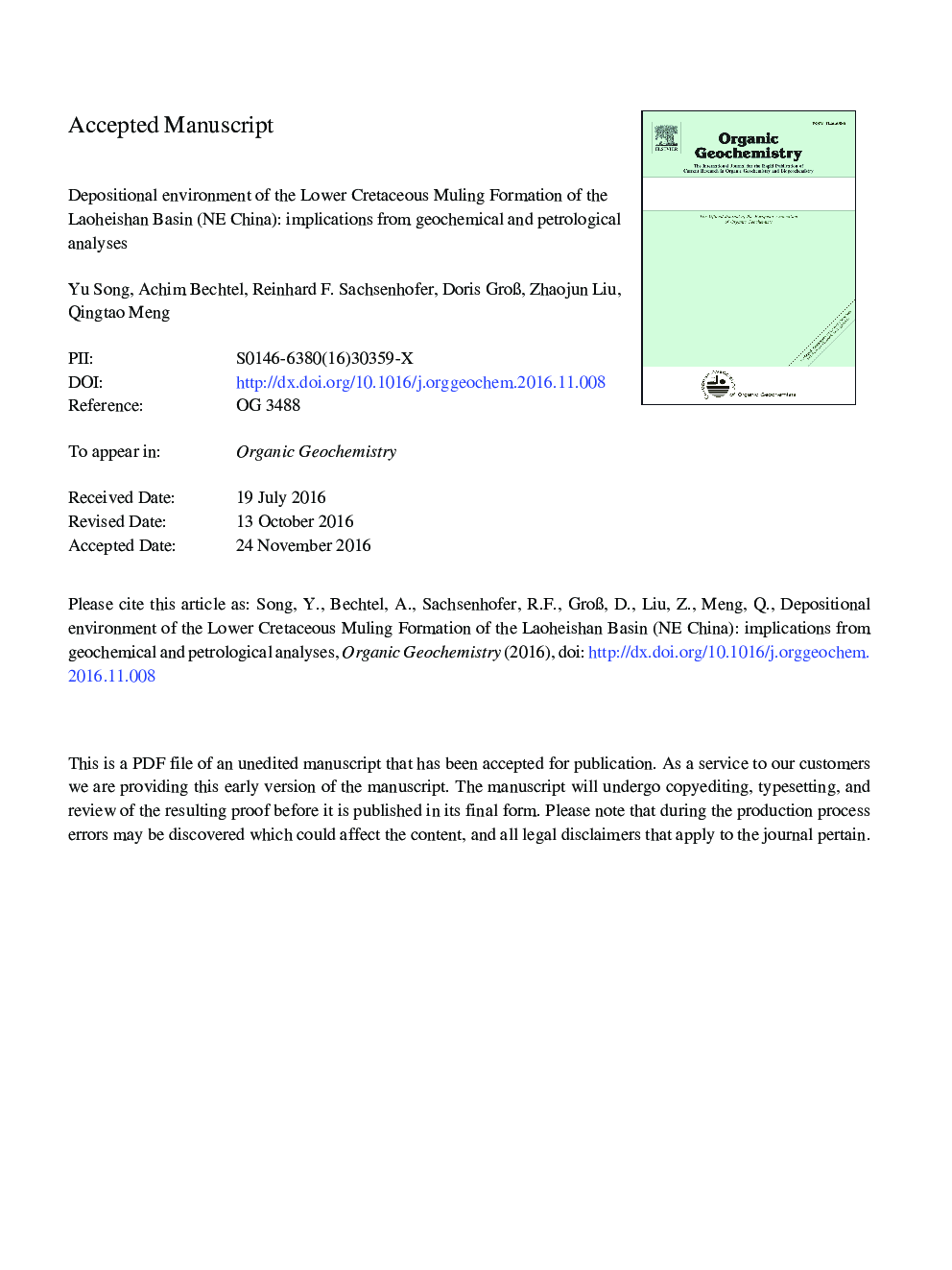| Article ID | Journal | Published Year | Pages | File Type |
|---|---|---|---|---|
| 5161660 | Organic Geochemistry | 2017 | 57 Pages |
Abstract
The Laoheishan Basin located in northeastern China is filled with non-marine coal- and “oil shale” (oil-prone mudstone) sediments of the Lower Cretaceous Muling Formation. Based on petrological, mineralogical and geochemical methods, the depositional environment during organic matter (OM) accumulation is investigated for the first time. The coal is subbituminous in rank. Petrological and bulk geochemical data indicate sapropelic coal, deposited in low-lying mire under freshwater conditions. High pristane/phytane ratios provide evidence for a land plant origin of OM and oxic conditions during deposition. A neutral to slightly alkaline pH is reflected by the presence of carbonate. High liptinite contents and terpenoid biomarker composition indicate high amounts of resinous OM. During “oil shale” deposition, a raised water table was favorable for OM preservation under oxic to dysoxic conditions. The “oil shales” in the lower unit of the succession (not associated with coal) are characterized by high hydrogen index and resinite contents interpreted to reflect deposition at elevated water depths. In contrast to the findings of previous studies on “oil shales” in China indicating its origin from algal OM, a predominance of terrigenous OM, rich in waxy and resinous lipids, is implied from biomarker and maceral composition. The Lower Cretaceous “oil shale” and coal in the Laoheishan Basin contain high amounts of land plant derived terpenoid biomarkers, derived from Coniferales (e.g., Pinaceae, Cupressaceae/Taxodiaceae, Araucariaceae, Podocarpaceae) and ferns. The results are in agreement with palynological data. The data highlight the potential of resinous and waxy OM to form excellent hydrocarbon source rocks.
Related Topics
Physical Sciences and Engineering
Chemistry
Organic Chemistry
Authors
Yu Song, Achim Bechtel, Reinhard F. Sachsenhofer, Doris GroÃ, Zhaojun Liu, Qingtao Meng,
